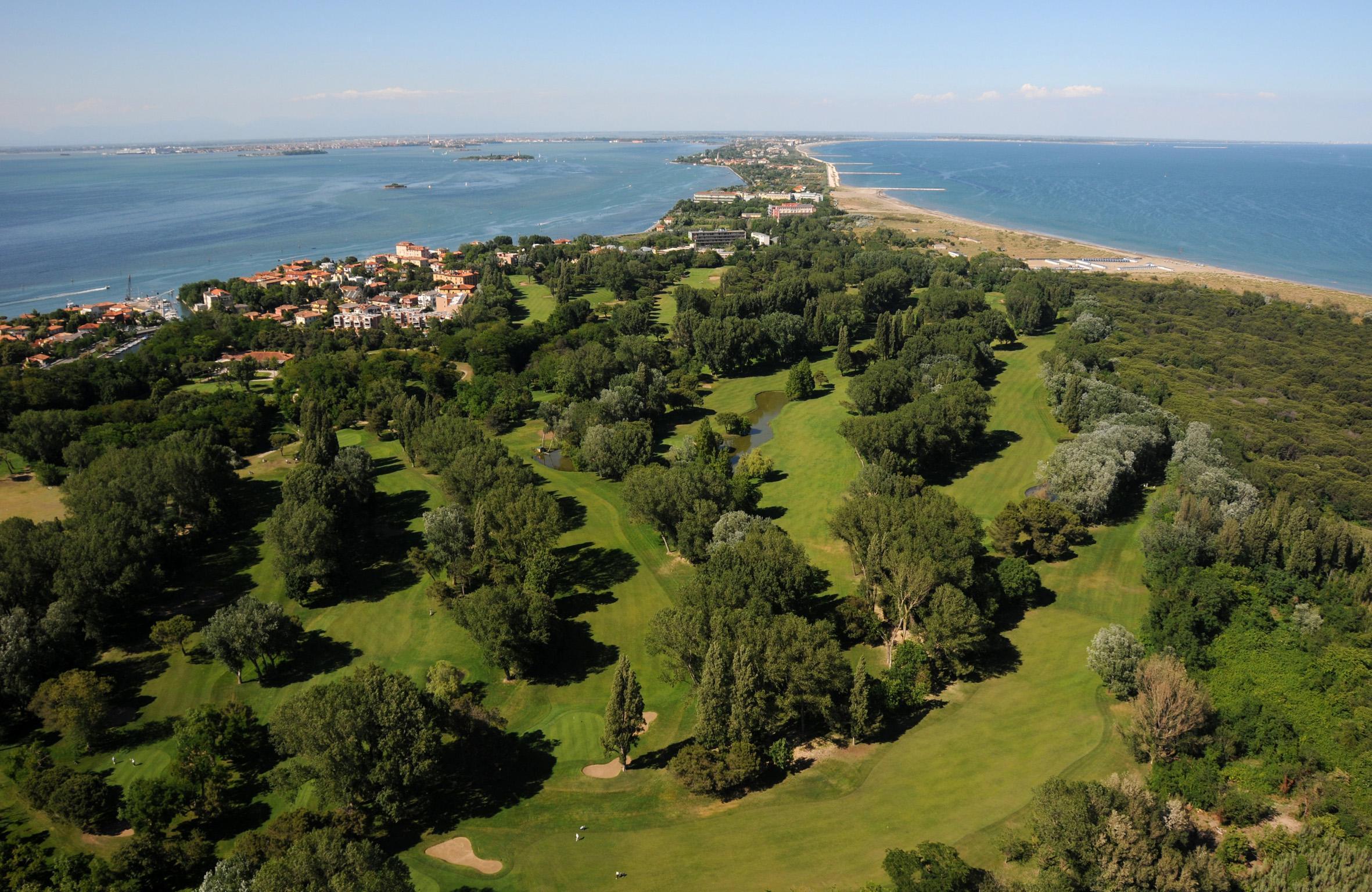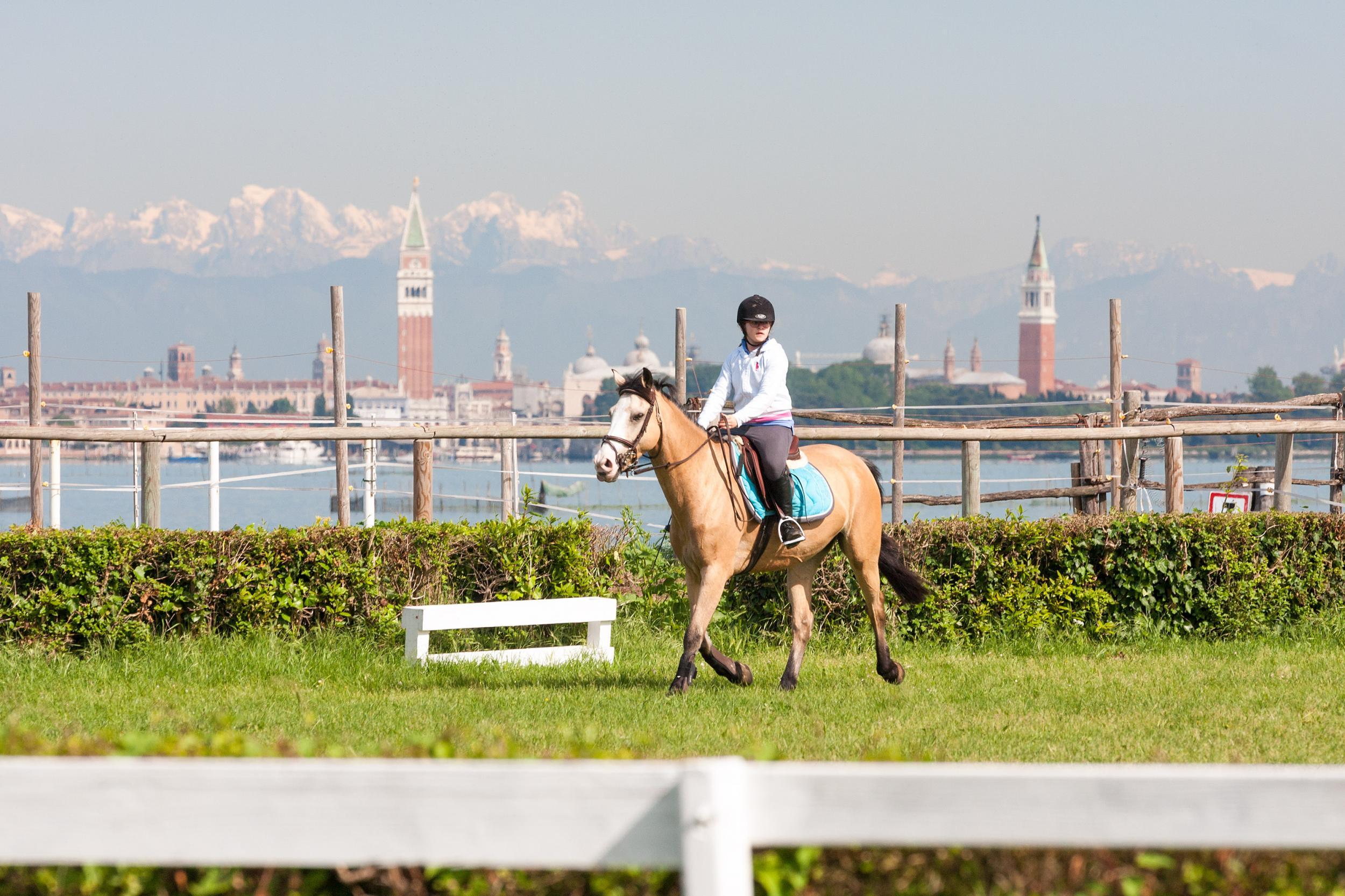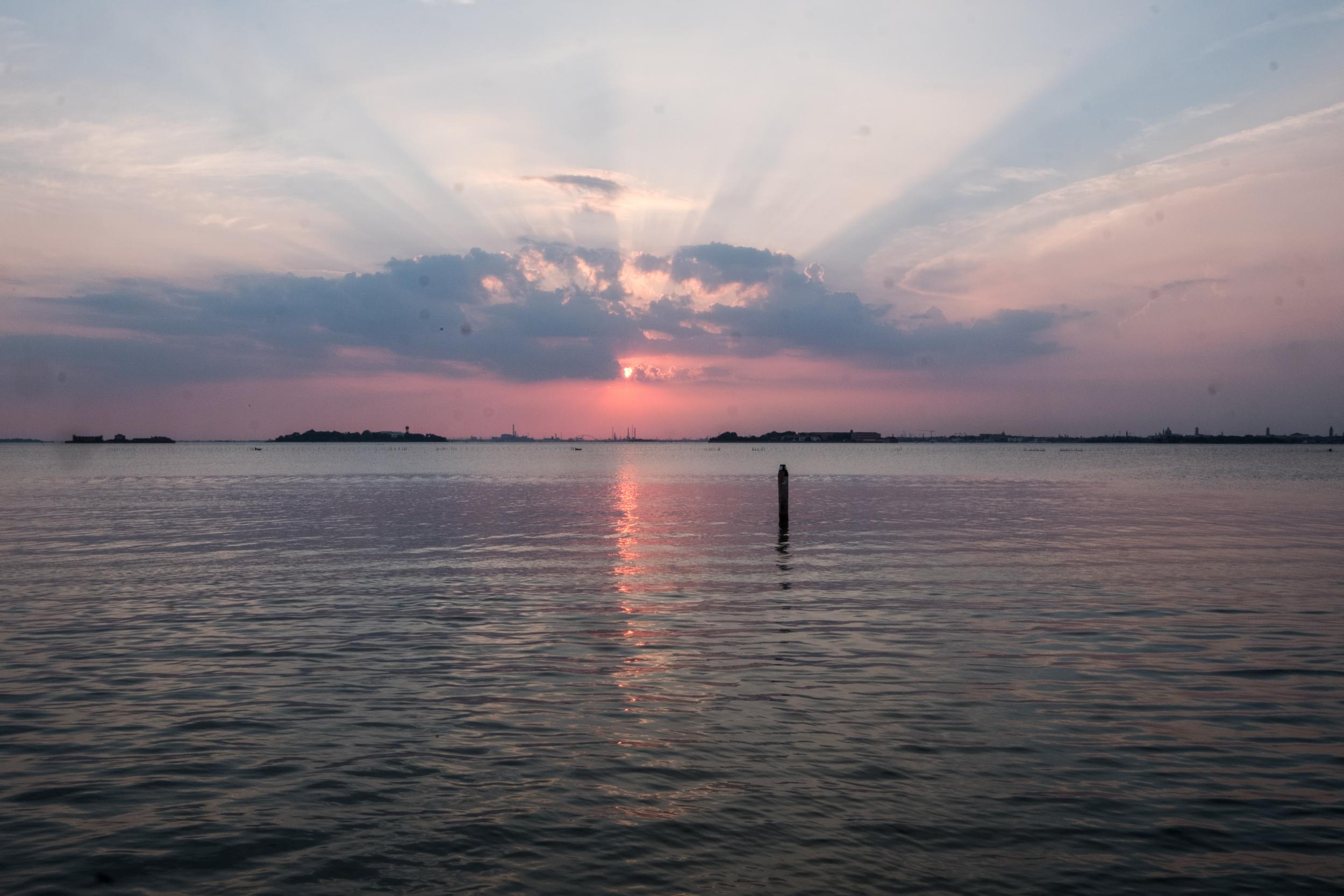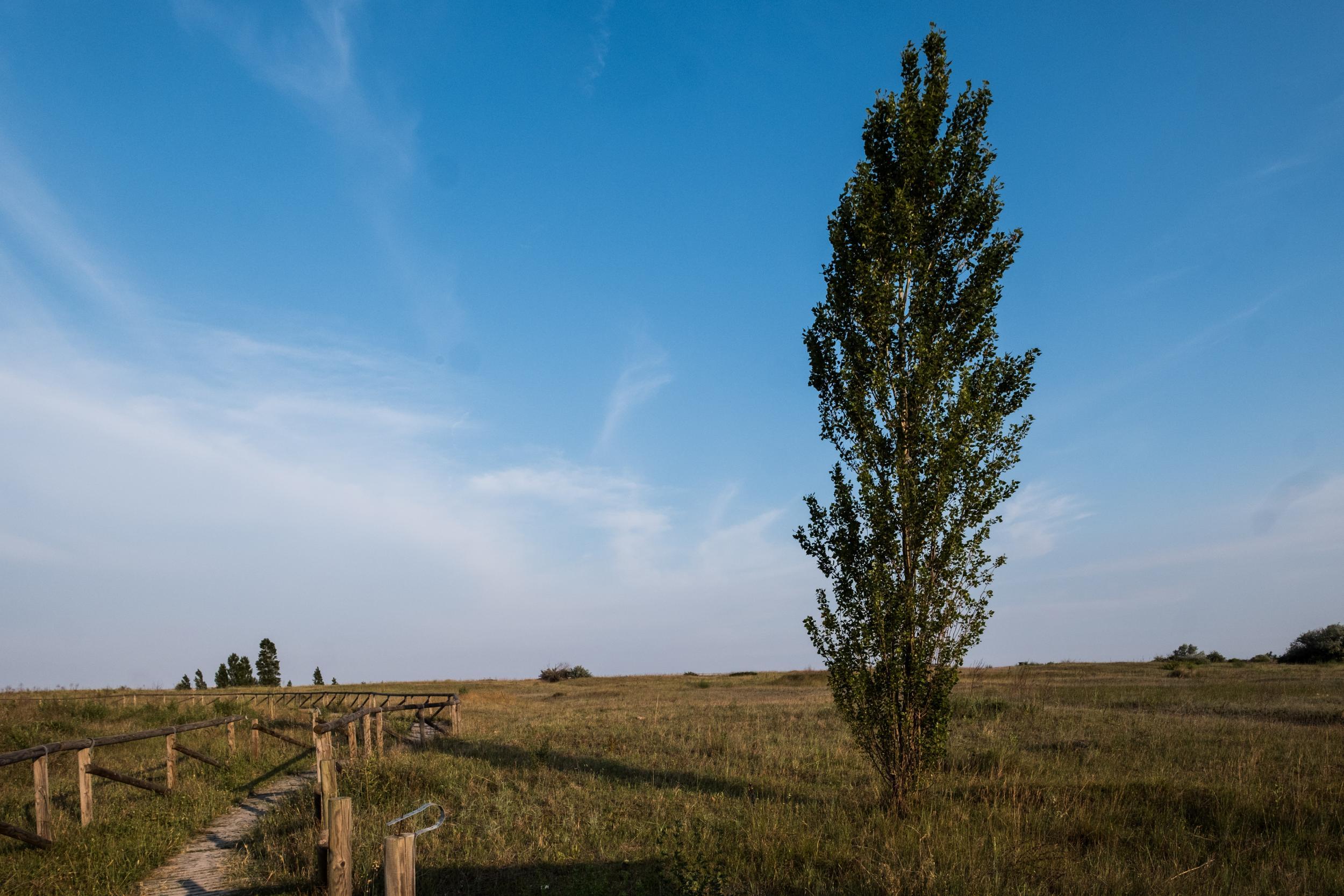Venice Lido: The island reinventing itself as a sustainable tourist destination
The Venice Lido is reinventing itself as a hub of sustainable tourism. Marketing tactic or genuine movement? Julia Buckley goes along to see

It’s a July weekend in Venice. July – when tourists peak, canals reek and only those who know nothing about La Serenissima venture into its sweltering depths.
And on this July weekend, I’m sitting on a waterfront bench, sea breeze in my hair, the sound of bells drifting across the lagoon, looking across the water to the belltower of San Marco. A pine tree leaning at just the right angle is providing helpful shade; the air is heavy with the smell of oleander. I’ve discovered the secret of Venice in the summer – and it’s called the Lido.
No one goes to Venice for the Lido, of course – unless it’s in September, when people pile on the vaporetto to go and star-spot at the Venice Film Festival. Outside of those 10 days, you think, why fly to the city of gondolas and hang out in the bus-ridden suburbs? There’s a beach – 10km of uninterrupted sand, in fact – but what philistine goes to the city of Titian and Tintoretto to lie in the sun?
It wasn’t always like this. Back in the 19th and early 20th centuries, the Lido – a 12km sliver of sandbank, acting as a natural barrier to the lagoon for the city, a 10-minute boatride away – was the place to be. Europe’s glam set descended every summer. They built everything from belle époque villas to beach cabins. They liked the art on offer in town, of course – and they loved the intellectual air it leant to their fun in the sun – but they liked the Lido even more.
But as Venice exploded in popularity in the 20th century, the Lido had an identity crisis. “We lost our way,” says Michaela Cafarchia, a fourth-generation Lido hotelier. Business got bad. “One day, I realised I’d have nothing to leave my children.”
Other business owners, she realised, felt the same. So three years ago, they formed a consortium, the Consorzio Venezia e il Suo Lido, aiming to work together, as a community. This year they’ve launched a sustainable tourism initiative. Finally, they hope, the Lido’s stagnation period is over.

“Sustainable tourism” and “Venice” don’t exactly go hand in hand, of course – and sustainable tourism is also one of those 2017 buzzwords that promises so much and usually delivers so little. Arriving on the Lido, I decide I’ve been had – this may not be Venice, literally sinking under the weight of 60,000 selfie sticks a day, but it’s still as resorty as any other holiday spot.
Then I get on a bike, ride to that bench, and – bam – I get it.

The magic of the Lido isn’t just a question of being removed from the action of mass tourism – though listening to the chorus of bells floating across the shimmering lagoon without jostling with Instagrammers certainly helps. The magic is that although it’s full of tourists, it’s also full of locals. It’s a real place, inhabited by people who saw what happened to Venice and want to make sure it never happens again (almost everyone I meet on the Lido tells me that they used to live in town, until town got unbearable). And they’re taking care to curate it: to keep the small businesses open, to retain a sense of community, to keep things on a small scale, to keep them local.
Most businesses are family-owned; at my hotel, chats with reception staff go further than the normal pleasantries; my second visit to an 86-year-old gelateria wins me the greeting, “ciao, cara” – hiya love. Nobody offers to charge my card in pounds “for my convenience.” One evening, I turn up unannounced for dinner at Lio, a beachside restaurant wedged into the sand. It’s already packed, but instead of batting me away (as every guidebook-approved restaurant has ever done in Venice when I’ve thrown myself on their mercy), they scoot about to find a table.

The menu has the usual – pizza, pasta, seafood – only this menu focuses so fiercely on local ingredients that there’s even a pizza topped with nothing but vegetables grown on the Lido, and a whole section of salads “from Veneto gardens”. It makes a difference to the taste, as well as to your conscience, by the way – the salad tastes earthy in a way I’ve only previously experienced at a grow-your-own hippy retreat. It is, they tell me, part of the Consorzio’s initiative – every restaurant has pledged to have at least one locally-sourced dish on the menu.
I have five days on the Lido. The first two I spend in this more urbane part, cycling (there are Boris bikes for hire, but most hotels have their own) and walking, stopping every few metres to breathe in the view. I go past mansions that tell the stories of the jet set that colonised the Lido: a neo-Gothic palace, an Olde English cottage, a portly Swiss chalet, a turbo-charged Nordic cabin. I have lunch at the tiny 1930s Nicelli airport, where tourists whizz in and out to take helicopter rides over the lagoon, but locals cram into the restaurant, feasting on juicy lagoon prawns and soaking up its perfectly preserved art deco architecture (“Look,” says the man at the bar, “There’s a hidden swastika in that cabinet – Mussolini had it installed when Hitler came to visit”) and watching little private planes bounce along the grass runway.

I cycle along the Lungomare seafront, where the oleander gives way to Victorian-style cabanas, the sand drizzles into the Adriatic and the sky bruises the sea violet as the sun goes down behind the ships in the distance.
And I cycle over bridges and along canals (although the Lido’s mostly flat and straight, the shoreline facing Venice is pockmarked with them), looking at La Serenissima in the distance. I stop at the equestrian centre, where the paddocks are right on the water (you can take lessons here, but you can’t leave the premises, and beginners are confined to the inside). And I stop at that bench, overlooking the brick walls of the Lazzaretto Vecchio – the old quarantine island which floats just offshore.
A boat is pulling up over there, disgorging parasol-toting tourists onto the shore – but I can’t hear a thing, because the roar of cicadas is drowning them out. I dig my feet into the grass – the shoreline is carpeted with wild violets – and watch little boats putter by, rowers taking their daily exercise, a couple of teenagers mooring for a second as they tune their radio. The nonna parked up near me in her wheelchair sighs in delight. I find myself following her lead.
But there’s more to the Lido than this living Fellini set, and on my penultimate day, I cross right to the other end of the sandbar, where I’ve heard whisperings of wild dunes, wilderness, and “orti” – tilled fields carpeted with artichokes and other vegetables. I start at Malamocco, an unspoiled village that was as important as Venice in Byzantine times, but stayed stuck in aspic as the world gravitated to the Rialto. There’s a hotel here, Relais Alberti, that practises truly slow tourism – they lead guests into the orti to pick ingredients, and take them back to cook them in a 16th-century kitchen.
The locandiera – a word for innkeeper that dates back to Goldoni’s time – takes me under the village arch and along a footpath, orti one side of me, brackish ground the other. There’s a strong breeze, and the smell of the sea. Up a few steps, we find ourselves at the Murazzi: reinforced walls – with a biking trail on top – to protect the Lido (just 200m at its narrowest point) from the Adriatic, which thrashes against the concrete below.

Beyond the Murazzi, the island thickens out again, with dune-backed beaches spilling out to the tip. And at the end – by the diga, a barricade-slash-pier, with the controversial Mose flood barrier looming nearby – is the Lido’s wildest, most spectacular beach, its shoreline littered with hunks of driftwood, huge blanched stumps erupting from the sand and being used as improvised towel hangers.
There’s a bar here, Macondo – half buried by the sand, shaded by tamarisks. And there’s something South American in the air – an echo of Uruguay’s wild Atlantic coast, ruled by a nature man has never been able to tame. The Mose floats offshore, rotting as fast as it’s built. The sea rushes towards us. This is Italy, land of the sunlounger and beaches-so-prissy-that-they’re-raked-by-the-hour, I tell myself over a sangria. This is Venice, land of the tourist locust.
The next day – my final day – I’d planned to face her, La Serenissima, her serene highness who these days is rarely serene. You can’t go without seeing at least one exhibition, I’d told myself; without swooning at at least one piece of world-changing art.
And yet, somehow, I find myself on the beach again – the more gentrified one this time, where the sea is one side, a pizzeria, bar and fancy toilets the other, and one has a wood-built cabin, four deckchairs and a kingsize sunlounger to oneself. It’s retro, Lido heyday-style again, and I half expect to see Marcello Mastroianni sauntering towards me.
I should at least go to Giudecca, I tell myself, as I stick a toe in the sand. It’s the Biennale. I should at least see the LaChapelle at Tre Oci. I should see my favourite Tintoretto at San Giorgio.
I tussle with cultural tourist guilt.
I think of the sunburnt hordes occupying every step, every pontoon, jammed together on every bridge as I’d nipped up the Grand Canal for a meeting two days earlier.
I think, that is unsustainable. I think, this is sustainable.
And I stay on the beach.
Travel essentials
Getting there
Monarch flies from Gatwick, Birmingham and Manchester to Venice from March to October from £63.
Staying there
The Grand Hotel Ausonia & Hungaria is a slightly faded but utterly charming grande dame on the main street, a few minute's walk from the vaporetto. Rooms are comfortable if not modern. Doubles from €86, B&B.
Villa Mabapa is in a liberty-style building on the waterfront, a 15-minute walk from the vaporetto stop, though the atmosphere's not quite so nice. Doubles from €77, B&B.
More information
Hotels are open year-round but the beach season finishes early, in mid-September. It's free to go on the beach, but cabanas and sunbeds are privately run and cost around €50 a day in July and August, and €30 a day in June and September. There are discounts for weekly and monthly use. The writer went to the CAPLI (Consorzio Alberghi e Pensioni Lido) beach, run by a group of hoteliers. To book a cabana, turn up on the day or call 0039 041 5260356.
Join our commenting forum
Join thought-provoking conversations, follow other Independent readers and see their replies
Comments